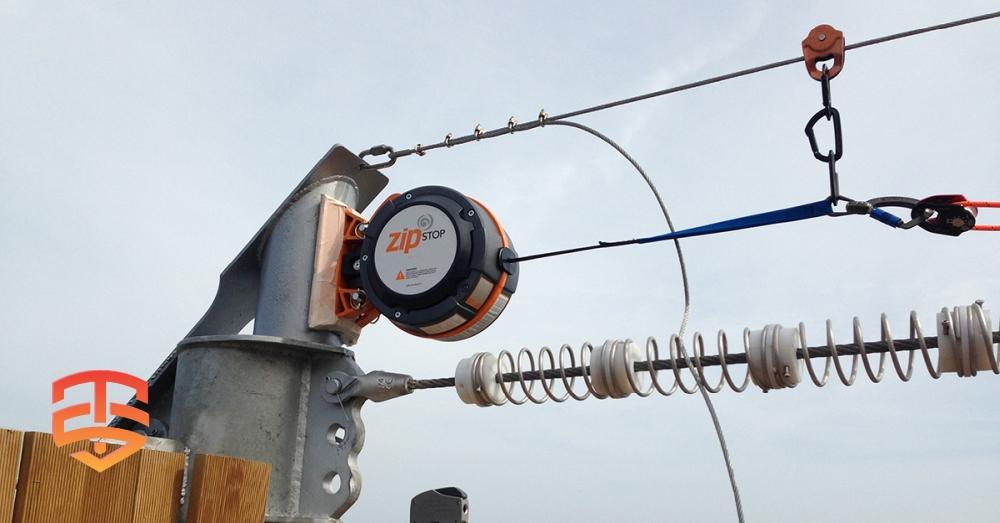
In the challenge course industry, zip lines have a long history and are frequently a component of a bigger participant experience. Since the beginning of the millennium, zip lines have grown in popularity. They come in a variety of styles, from low-speed aerial adventure parks and guided canopy tours to high-speed, long-distance rides.
To reduce the risk of injury, it is essential to match the zip line brake system with the rider’s (participant or staff) arrival speed. Human-operated (participant and guide active) zip line brake systems have resulted in serious injuries to riders and attendants (staff), escalating in severity with higher arrival speeds. With arrival speeds of 10 km/h or less, smaller, shorter zip lines don’t need brake systems (gravity takes care of the issue), and the risk of harm is significantly reduced. This type of zip line is not covered in this debate.
Speed and Risk Relations
Speed is a major risk factor in auto accidents, affecting both the likelihood of injury and the severity of it. This link is especially important for cyclists and pedestrians without crash protection, who are in a scenario comparable to zip line riders. For instance, when a vehicle strikes a pedestrian at 30 km/h, the chance of survival increases to 90%, but lowers to 50% at 45 km/h. This connection explains why the majority of governments set a 24 km/h speed limit in parking lots and on trails used by non-motorized users. The typical upper speed limit for active zip line brake systems is 24 km/h.
Our self braking zipline trolley solves the major safety issues around the controlled and safe braking situation at the end of high speed zip wire courses. Designed especially for steep, long and fast zipline courses, the MAG Brake Trolley allows for the development of long-distance zip-lines without a complex braking area. With that, we leave the smallest possible environmental footprint, by eliminating expensive and high maintenance constructions. With its internal braking system the magnetic braking zipline Pulley is able to handle a reduction of speed of up to 35%.
All riders, independent of their weight and/or weather conditions (wind), will arrive at the same speed, allowing a safe and controlled braking situation.
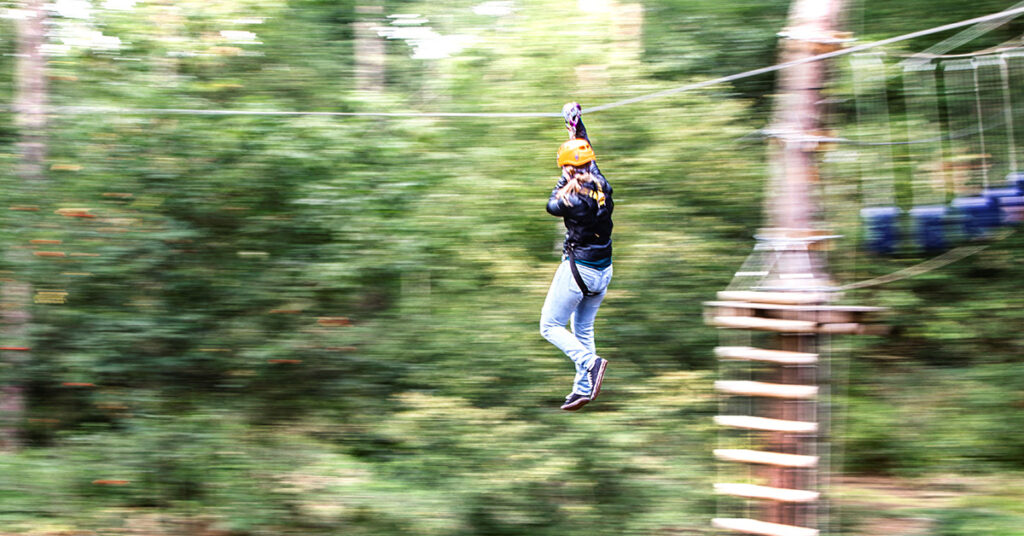
Considerations for Brake Systems
The usage of human-operated braking systems is not new, and zip line brake systems come in a variety of designs. The following factors should be carefully taken into account when determining whether people (both passengers and landing platform brake attendants) have access to a brake system that reduces the risk of serious injury.
Time and Distance of Reaction
The reaction distance is the distance a zip line rider travels between the moment the brake attendant realizes they need to brake and the moment they start applying braking force. A rider moving at double the speed will have a reaction distance that is twice as lengthy because it is directly proportional to speed. Operator expertise and anticipation have an impact on the range of the operator’s reaction time, which is between half (0.5) and two (2) seconds. Therefore, experienced zip line guides operate guide-active braking systems more effectively than inexperienced guides. Another reason participants have shown to be unreliable at primary braking is due to their lack of expertise.
Braking Range
Braking distance is the distance covered by a zip line rider from the time the brake system is engaged until they come to a complete stop. The braking distance quadruples when a rider’s speed doubles (with the braking force being constant), in contrast to the one-to-one ratio we observe between speed and reaction distance, because of the relationship between speed and related energy that the brake must absorb. When brake attendants underestimate the speed and distance of riders traveling at high speeds, the non-linear relationship between rider speed and braking distance becomes especially problematic since the braking distance needed to stop a rider at a safe speed quickly surpasses the available area.
A rider hung from a pivoting lanyard will experience a pendulum swing when extra braking power is used to shorten the stopping distance since the rider will still be moving when the zip trolley is stopped. Riding on primary brakes, motorcyclists should come to a stop softly and gradually with a pendulum swing that prevents them from making touch with the zip cable or any other brake parts. In emergency braking, some contact with objects could be permitted.
-
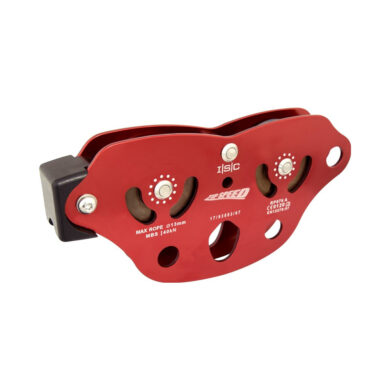 ISC ZipSpeed-L Trolley€ 232,00 – € 330,00 Ex VAT
ISC ZipSpeed-L Trolley€ 232,00 – € 330,00 Ex VAT -
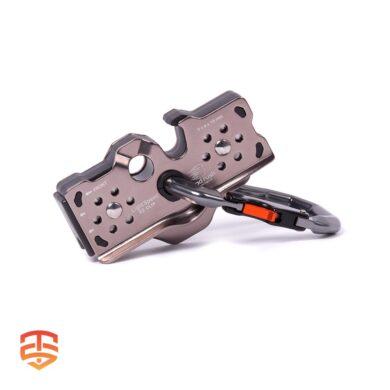 LightSpeed EZ Clip Trolley€ 204,00 – € 225,00 Ex VAT
LightSpeed EZ Clip Trolley€ 204,00 – € 225,00 Ex VAT -
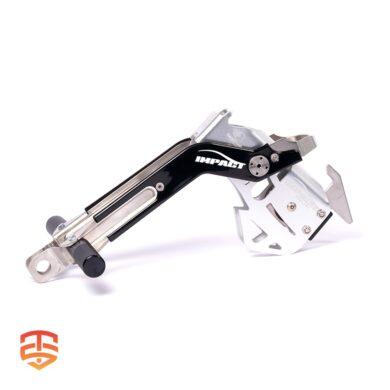 LightSpeed Impact Zip Line Trolley€ 179,00 – € 345,00 Ex VAT
LightSpeed Impact Zip Line Trolley€ 179,00 – € 345,00 Ex VAT
Important Points to Bear in Mind
When creating or utilizing human-operated zip line brake systems, the following recommendations are made:
It is wise to design zip line brake systems that do not rely on participant actions to provide the primary brake due to the inability of staff to physically intervene with participant actions while a participant is riding a zip line, as well as the risk of injury if the participant does not properly apply the brake. On lines with arrival speeds greater than 10 km/h, participant contact must be delayed, creating a situation similar to that which arises while players are belaying, rappelling, or performing other safety-critical activities.
Examine the surrounding environment in which the zip line operates, paying particular attention to the wide fluctuations in conditions that may have an impact on the zip line’s landing speed. These include the temperature, humidity, precipitation, wind speed and direction, and so forth. Examine whether there is a sufficient margin for error (buffer) to account for these variables that arise during operation over the course of a whole season but weren’t there when the system was first commissioned (aka operational testing). Avoid creating zip line brakes that must operate at their absolute maximum with no room for error.
If the expected rider speed is accurate or growing over time, think about adopting a systematic data collection from pre-use checks and periodic monitoring to ascertain whether each zip line braking system is still working as intended. Plan to go over this documentation frequently.
Check to see if the strength and reaction time of the brake attendants are adequate for the number of riders and the speed of each zip line at the facility. It shouldn’t be necessary for these employees to have superhuman strength in order to offer an effective brake. When it comes to closed loop rope brake systems, the brake attendant’s capacity to retain control throughout the braking process should be taken into account.
We highly advise everyone who has any involvement with human-operated zip line brake systems to assess rider speed as soon as they enter the brake zone, paying close attention to reaction distance, the operator’s (brake attendant) experience profile, and overall braking distance. The major brakes on zip lines traveling at the highest speeds must be automatic (passive), making them different from zip lines traveling at lesser speeds.
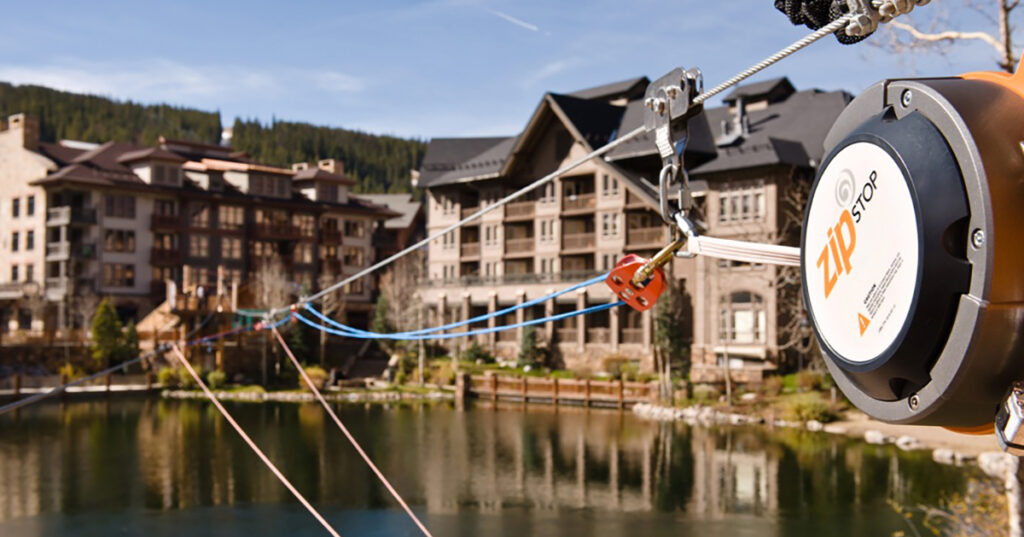
Landing Platform considerations
Because the height of a take-off or landing platform’s edge might vary dramatically along its perimeter, a sense of security may be created in one area without awareness of exposure at other edges, increasing the danger of underestimating it. Additionally, the ground next to or nearby the platform could be at grade level or present its own fall or tumble risk (for example, steep or loose slopes, cliffs, and ravines). A zip line rider’s intentional or unintentional entanglement could put an employee at risk of moving unfettered along the cable and into a potentially fatal fall zone. By ensuring that employees have access to an effective restraint or fall protection system in these aerial adventure situations and that employees correctly use the restraint or fall protection systems that have been supplied, each of these dangers can be addressed.
The platforms and landing sites for zip lines can be of many designs. When determining whether an employee has received proper restraint or fall protection, the following factors (and there may be others) merit your careful attention.
- The platform’s height above the ground at any point along its circumference.
- The ability of workers of all sizes to quickly change positions to perform every component of their job
- The instruction and safety gear offered to workers in the zip line take-off and landing area.
- The availability of anchors for fall protection or restraint that are prominently marked.
- The potential for an employee to unintentionally cross over a net or other kind of collective fall protection while attached to a rider. The possibility that the fall hazard location might be far distant should be given special consideration.
- A fall restraint system prevents the employee from reaching a ledge, a fall restrict system limits the employee’s fall, and a fall arrest system mitigates the employee’s fall. These are examples of adequate individual restraint or fall protection.
When creating or utilizing a zip line take-off or landing location and related platforms, we advise the following:
- Check the applicable jurisdiction’s employee fall protection legislation if there is a risk of falling. Employee fall safety systems need to be appropriately developed.
- Examine the terrain immediately surrounding the platform for the zip line landing place, paying particular attention to the possibility of a steep slope that could increase the effects of a slip from the platform. Fall risks could be present close to where zip lines take off or land, or they could be up to 50 feet away.
- Take into account the size, strength, and speed of zip line riders as they approach the landing spot.
- Take into account the impacts of brake system failures and how those failures may affect both employees and passengers, especially the risk that a rider may try to stop by grasping an employee.
- In an area where there is a risk of falling, consider if rails, nets, and airbags are appropriate collective fall protection methods. It’s possible that topography and drag distances prevent these from being good options.
We highly advise anyone who has any connection to platforms used for zip lines to assess the fall dangers in these areas with a focus on employee/rider contact and to put restraining or fall protection devices in place.
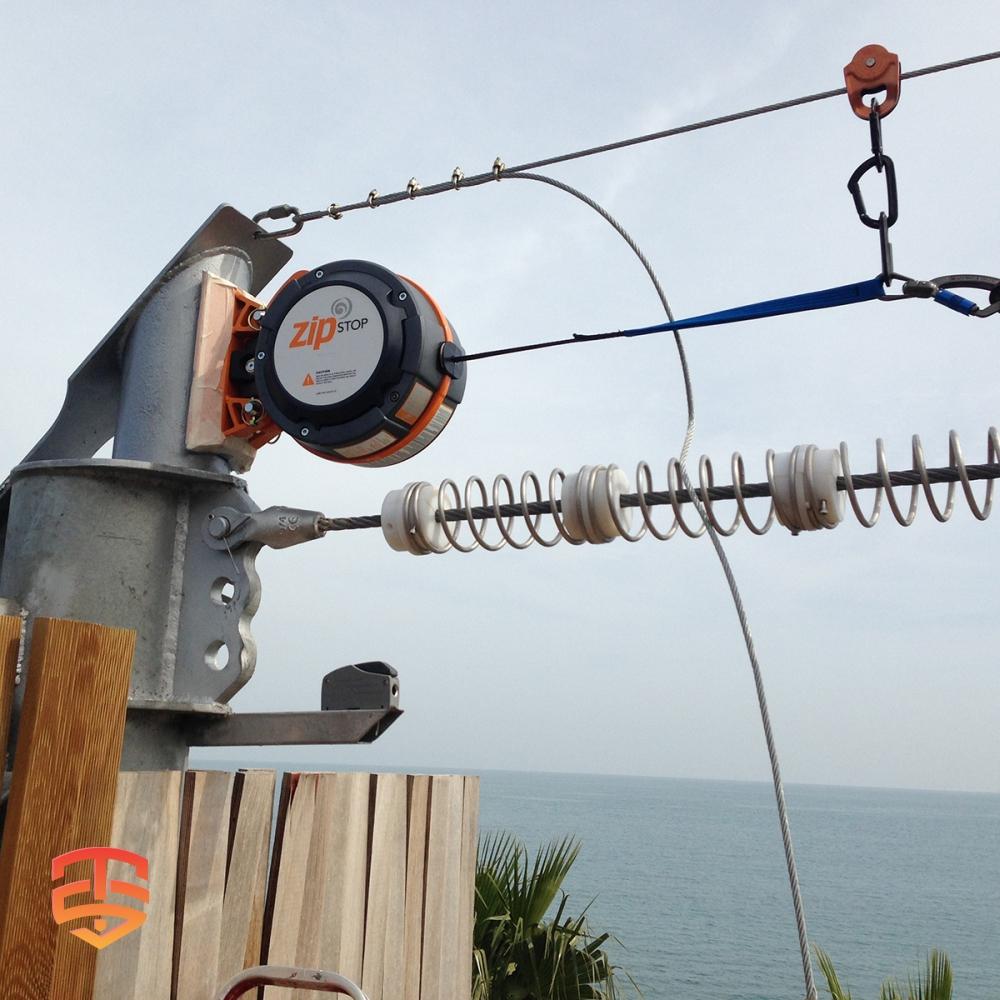
Zipline Safety Solutions
We deliver a complete professional Zipline system, from our Self-braking Magnetic Zipline Trolley to a safe Zipline Spring Brake.
We offer a full family of zip line brakes that increase throughput with a hands-free braking experience for zip line riders and operators, and a full ecosystem of zip line products to outfit the best zip line builds in the world. We use advanced technology to engineer and manufacture innovative adventure equipment for the outdoor, amusement and recreation industries.
Beyond the Basics: Unveiling Zipline Technology with Expert Analysis
Intrigued by the potential of Zipline technology? You’ve come to the right place! This article provides a solid foundation. But if you’re eager to delve deeper and gain insights from industry experts, keep reading…
- Zip Line Design: Components for a Complete System
- Considering operating and investing in a zipline?
- 9 Zipline Mistakes You Don’t Know You’re Making
- Magnetic Zipline Braking: A Revolutionary Way to Ensure Safe Rides
- Pros and Cons of Different Zip Line Brakes
- Expert Tips for Zip Line Brake Installations
- White Paper on Zipline Emergency Arrest Devices (EAD)
- The Importance of Optimizing Zip Line Design for Rider Speed
- Does your zip line need an emergency arrest device?
- The Magnetic Self-braking Zipline pulley
- Zipline Braking and landing considerations
- Why Zip Line Trolley Bearings Matter
- Whitepaper: Zipline Braking Dynamics
- Zip Line Installation: Give them the Best Ride
- How to startup a Successful Zip Line Business
-
 Spring Brake System | Primary & EAD zipline brake€ 98,00 Ex VAT
Spring Brake System | Primary & EAD zipline brake€ 98,00 Ex VAT -
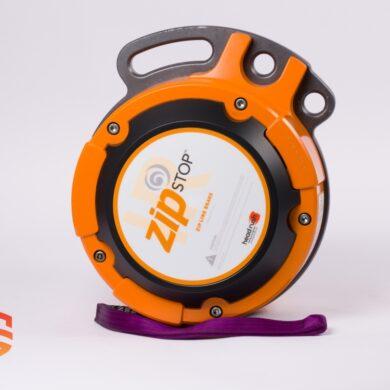 zipSTOP IR Zipline Brake | 24 – 60 kph€ 5.649,00 – € 5.799,00 Ex VAT
zipSTOP IR Zipline Brake | 24 – 60 kph€ 5.649,00 – € 5.799,00 Ex VAT -
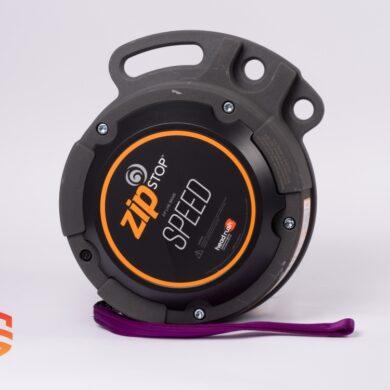 zipSTOP SPEED Zipline Brake | 50 – 72 kph€ 6.099,00 – € 6.349,00 Ex VAT
zipSTOP SPEED Zipline Brake | 50 – 72 kph€ 6.099,00 – € 6.349,00 Ex VAT







